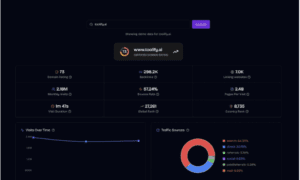In our hyper-connected world, your digital identity, which is everything from your email address and social media accounts to financial information and device usage, is under constant threat.
This article walks you through four key areas you can act on right now to safeguard your digital identity from hackers.
Strengthen Your Credentials and Authentication
The main foundation of building strong digital security online is by starting out with a strong, unique password for each of your accounts online. Reusing a password can be dangerous – if one account is compromised, hackers can test the same credentials across multiple platforms, hacking accounts. Try and adopt using a password manager to generate and store complex passwords securely.
Allowing features like the multi-factor authentication (MFA) on accounts that support it is handy at adding an extra layer of protection on an account beyond just the password, allowing users to verify their login. Also consider adopting new login methods such as passkeys, which use cryptographic keys instead of a password. These are great at being resistant against phishing attacks. With more than 97% of identity attacks being password-based, strengthening your authentication methods is your first line of defense.
Secure Your Devices, Networks & Connections
Hackers mainly exploit weak networks, outdated software, and unpatched devices to gain access to personal information. Public Wi-Fi spots are a main target for cybercriminals to intercept encrypted data. This is why it is important to make sure that your operating systems and applications are all up to date with the latest security updates, as well as to avoid staying logged into sensitive accounts when using public networks if you’re out and about or working in a public space.
Also enable device encryption on devices such as smartphones, tablets, and computers to help protect your data if your device ends up lost or stolen. Consider using a VPN Chrome extension to encrypt your internet connection and protect your browsing activity from prying eyes, especially when using unsecured networks.
Manage Your Digital Footprint and Social Exposure
Your digital identity goes beyond just your login credentials; it extends through your social media, apps, public records, etc. Oversharing personal information such as birthdates, mother’s maiden names, or pet names are the most common things used within passwords and allow hackers to gain ammunition to bypassing security questions. Make sure to regularly review your social media privacy settings and limit what is publicly visible. Be cautious about which apps have access to your personal data and revoke permissions for unused applications. When you’re using your device, consider using privacy-focused search engines and browsers to protect your online activity from being exposed.
Monitor, Respond & Recover Proactively
Even with the best practices, breaches can happen at any time. In 2024, the FTC received over 1.1 million identity theft reports, highlighting the scale of the problem. Make sure to set up credit monitoring alerts to keep a close eye on catching out any suspicious activity on your account.
If a breach does happen on your account, consider freezing your credit to prevent new accounts from being opened in your name. If you do suspect any compromise, it is important to act immediately by changing passwords, revoking device access, and, most importantly, contacting your bank and credit card company to report the incident on your account.
These proactive steps can reduce your vulnerability against cyber threats, and by strengthening your credentials, securing your connections, and managing your digital presence, you’re stepping in the right direction of avoiding hackers in an increasingly dangerous digital landscape.



































